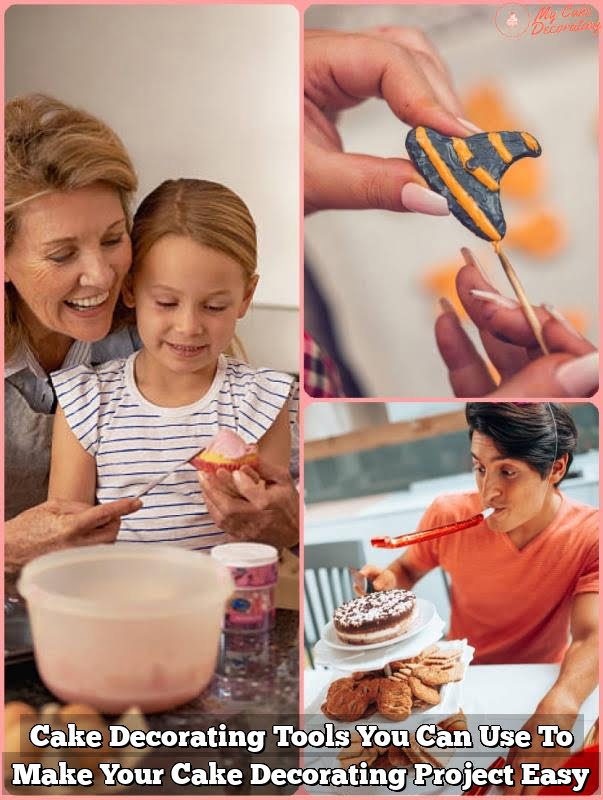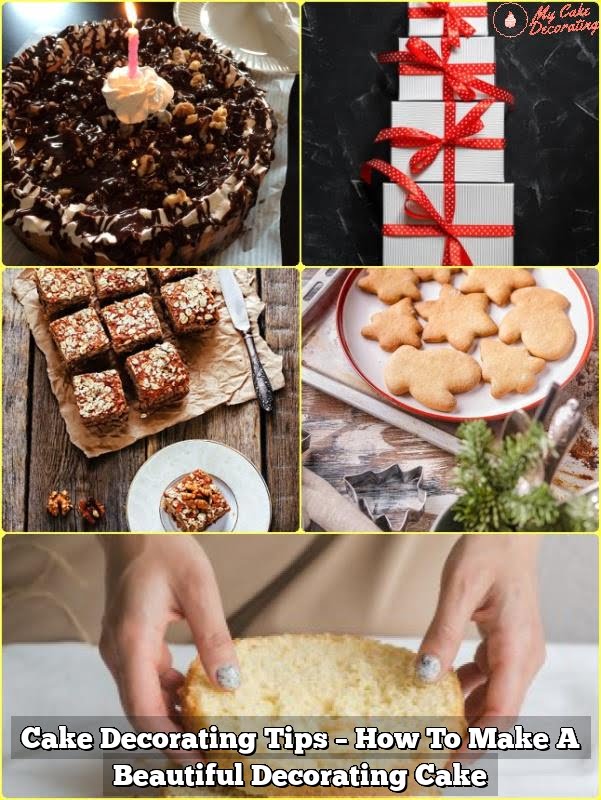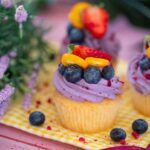Are you looking to add a creepy, gory effect to your next cake creation? In this article, we will show you how to make blood for cake decorating using edible ingredients. Whether you’re planning a Halloween party or just want to impress your friends with your realistic cake decorating skills, creating edible blood can take your cake design to the next level.
Cake decorating has become an art form in itself, and many bakers are constantly seeking new ways to elevate their designs. One popular trend in realistic cake decorating is using faux blood to create a gory and horrifying effect on cakes. However, it’s essential to use edible ingredients when creating this effect, as it will come in contact with the cake and, ultimately, be consumed by those enjoying the delicious dessert.
To achieve the perfect edible blood for cake decorating, you’ll need the right tools and ingredients. From natural red food coloring to achieving the right consistency and texture, we’ll guide you through each step of the process. Additionally, we’ll provide tips and tricks for ensuring that your finished product is both realistic and safe for consumption. So let’s dive into the world of realistic cake decorating and explore how to create an edible bloody masterpiece.
Understanding the Importance of Using Edible Ingredients for Creating Faux Blood
When it comes to cake decorating, creating a realistic and gory effect with faux blood can be a fun and exciting challenge. However, it is important to understand the significance of using edible ingredients when creating faux blood for cake decorating. Using edible ingredients ensures that the blood effect not only looks realistic but is also safe for consumption.
To achieve a truly convincing blood effect on your cakes, it is crucial to prioritize the use of edible ingredients. While there are countless recipes and methods for creating faux blood using non-edible materials, such as acrylic paint or corn syrup, these substances are not safe for consumption and should never come into contact with food. By using edible ingredients, you can achieve a realistic blood effect without compromising the safety of your cake.
By utilizing natural and edible ingredients, you can create a faux blood effect that not only looks authentic but also tastes delicious when paired with the rest of the cake. This attention to detail and commitment to using safe, edible materials will elevate your cake decorating skills and ensure that your finished creation is both visually stunning and entirely safe for consumption.
- When working with faux blood for cake decorating, always prioritize the use of edible ingredients
- Using non-edible materials such as acrylic paint or corn syrup can pose serious health risks
- Edible faux blood not only ensures safety but also enhances the overall taste and quality of your finished cake
Essential Tools and Ingredients Needed for Making Edible Blood for Cake Decorating
Tools Needed
To make edible blood for cake decorating, you will need a few essential tools. These include a mixing bowl, a whisk or spoon for stirring, and a small saucepan for heating the ingredients. You will also need measuring spoons and cups to ensure accurate measurements of the ingredients.
Ingredients
The key ingredients for making edible blood for cake decorating include corn syrup, red food coloring, and cocoa powder. Corn syrup serves as the base for the blood, while red food coloring provides the vibrant red color. Cocoa powder is used to darken the shade of red and create a more realistic look resembling real blood. Additionally, you may also need a small amount of water to adjust the consistency of the edible blood mixture.
Optional Ingredients
In addition to the basic ingredients mentioned above, some decorators may choose to add other elements to enhance the texture or flavor of the edible blood. For example, a small amount of cornstarch can be added to thicken the mixture if needed. Alternatively, adding a drop or two of vanilla extract can help mask any artificial taste from the food coloring while adding a subtle flavor to the edible blood.
By having these essential tools and ingredients on hand, you will be well-prepared to create your own realistic and edible blood for cake decorating projects.
Step-by-Step Guide on How to Make Natural Red Food Coloring for the Blood Effect
Creating a realistic blood effect for cake decorating starts with making natural red food coloring. This step is crucial in achieving a gory and lifelike appearance for your cake design. One of the most popular methods for making natural red food coloring is by using beets. Beets contain a natural pigment called betalain, which can be extracted to create a vibrant red hue.
To make natural red food coloring from beets, start by peeling and chopping the beets into small pieces. Place the chopped beets in a pot and cover them with water. Bring the water to a boil and then simmer for about 15-20 minutes.
The longer you simmer the beets, the deeper and richer your red food coloring will be. Once the beets have simmered, strain the liquid into a bowl and allow it to cool. This liquid can now be used as a natural red food coloring for your cake decorating needs.
Another method for creating natural red food coloring is by using pomegranate juice. Pomegranate juice contains natural pigments that can produce a deep red color perfect for creating an edible blood effect. Simply reduce the pomegranate juice by simmering it in a pot over low heat until it thickens and darkens in color. Once cooled, this concentrated pomegranate juice can be used as natural red food coloring for your cake decorating projects.
| Method | Natural Ingredient Used |
|---|---|
| 1 | Beets |
| 2 | Pomegranate Juice |
Creating the Perfect Consistency and Texture for the Edible Blood
When it comes to creating edible blood for cake decorating, achieving the perfect consistency and texture is essential for a realistic effect. Here’s a step-by-step guide on how to make sure your edible blood looks just like the real thing:
1. Corn syrup base: Start with a base of light corn syrup, which will give your edible blood the right thickness and sticky texture. Using about 1 cup of corn syrup as your base will provide enough volume for the desired gory effect.
2. Cocoa powder or chocolate syrup: To achieve the deep red color of real blood, add in about 1-2 tablespoons of cocoa powder or chocolate syrup. This will give your edible blood a natural and rich hue.
3. Red food coloring: Although you’ve already added cocoa powder or chocolate syrup for color, incorporating a few drops of red food coloring can further enhance the vibrancy of the red shade.
4. Adjusting consistency: Depending on your desired effect, you can adjust the consistency of your edible blood by adding more corn syrup for a thicker texture or by mixing in a small amount of water to thin it out slightly.
By carefully controlling these elements in your edible blood mixture, you can achieve a convincing texture and appearance that will elevate your cake decorating to a whole new level.
Remember, practice makes perfect when it comes to getting the right consistency and texture for your edible blood, so don’t be afraid to experiment with different ratios until you find what works best for your specific cake decorating project.
Tips and Tricks for Achieving a Realistic and Gory Look for Cake Decoration
Creating a realistic and gory look for cake decoration requires attention to detail and the right techniques. One of the key factors in achieving this effect is the use of natural red food coloring to mimic blood.
To make the color appear more realistic, consider adding small amounts of blue or green food coloring to create a deeper, more authentic hue. Additionally, using a toothpick or fine brush to add tiny spatters and drips can give the illusion of freshly spilled blood.
Another important aspect to consider is texture and consistency. Edible blood for cake decorating should have a slightly thick and sticky texture, similar to real blood. Corn syrup or honey can be used to achieve this consistency, giving the faux blood a glossy appearance when applied to the cake. For added realism, you can also mix in small amounts of cocoa powder or instant coffee to create a darker, more viscous effect.
When working on achieving a gory look for cake decoration, it’s helpful to study real-life examples of blood spatter patterns and textures. Observing images or videos of actual injuries or accidents can provide insight into how blood behaves in different scenarios. Incorporating these observations into your cake decorating technique can result in an incredibly realistic and impactful finished product that will leave a lasting impression on your audience.
Alternative Methods for Making Edible Blood for Cake Decorating
When it comes to creating an authentic and eerie blood effect for cake decorating, there are a variety of alternative methods and ingredients that can be used to achieve the desired look. One popular option is using a combination of corn syrup, food coloring, and cocoa powder to create a thick, glossy edible blood. This mixture can then be drizzled or piped onto the cake to simulate a realistic blood splatter or drip effect.
Another alternative method involves using fruit preserves or jam, such as raspberry or strawberry, mixed with red food coloring to create a sticky and thick edible “blood” paste. This method not only adds color but also enhances the flavor of the cake, making it a popular choice for those who want both aesthetic appeal and taste in their cake design.
For those looking for a vegan-friendly option, combining beet juice with cornstarch can create a vibrant red edible blood that is suitable for cake decorating. The natural color of beets provides an authentic hue without the need for artificial food coloring, making it an appealing choice for those who prefer all-natural ingredients.
Overall, there are many alternative methods available for creating edible blood for cake decorating, each with its own unique benefits and effects. Whether using corn syrup, fruit preserves, or beet juice as a base ingredient, these alternative methods provide flexibility and creativity when achieving a realistic and gory look for cake decoration.
| Method | Ingredients |
|---|---|
| Corn Syrup Mixture | Corn syrup, food coloring, cocoa powder |
| Fruit Preserves Method | |
| Vegan-Friendly Option |
Safety and Precautions When Working With Edible Blood for Cake Decorating
When working with edible blood for cake decorating, it is essential to prioritize safety and take necessary precautions to ensure that the final product is not only visually appealing but also safe for consumption. Here are some important safety measures to keep in mind when working with edible blood for cake decorating:
Use Food-Grade Ingredients Only
It is crucial to use food-grade ingredients when making edible blood for cake decorating. This includes using natural food coloring, corn syrup, and other edible materials that are specifically meant for human consumption. Avoid using non-toxic or craft-grade materials, as they may not be safe to ingest.
Be Mindful of Allergens
Before creating edible blood for cake decorating, it is important to be mindful of allergens. If you are aware of any allergies that you or your intended consumers may have, be sure to choose ingredients that are safe for everyone. Additionally, clearly label any cakes decorated with edible blood to indicate the presence of potential allergens.
Proper Storage and Handling
Once the edible blood has been created, it is important to store it properly and handle it with care. Store the edible blood in a sealed container in the refrigerator when not in use, and avoid cross-contamination with non-edible items. When handling the blood for decorating, use clean utensils and ensure that your hands are properly washed.
By adhering to these safety guidelines and precautions, you can confidently work with edible blood for cake decorating while ensuring that the final product is both visually impactful and safe for consumption. Taking these measures will not only contribute to a successful finished product but also provide peace of mind when presenting your realistic and gory cake creations.
Conclusion
In conclusion, mastering the art of realistic cake decorating can elevate your baking to a whole new level. By understanding the importance of using edible ingredients for creating faux blood, you can ensure that your creations are not only visually stunning but also safe for consumption. With the right tools and ingredients, as well as a step-by-step guide on making natural red food coloring, you can achieve the perfect consistency and texture for the edible blood effect.
As you showcase your finished cake, complete with gory and realistic decorations, it’s important to remember that practice makes perfect. Don’t be discouraged if your first attempt doesn’t turn out exactly as planned – with patience and dedication, you’ll soon be able to create show-stopping cakes that will leave everyone impressed.
So go ahead, unleash your creativity, and experiment with different techniques to achieve a truly gruesome yet delicious masterpiece. Whether it’s for Halloween, horror-themed parties, or simply to challenge yourself with a unique baking project, trying your hand at realistic cake decorating will surely inspire awe and admiration from everyone who sees your amazing creations.
Frequently Asked Questions
How Do You Make Fake Blood for Decorations?
Making fake blood for decorations can be done using a simple recipe that involves mixing together corn syrup, red and blue food coloring, and a small amount of cocoa powder. The corn syrup provides the right texture and consistency, while the food coloring creates the desired red color, and the cocoa powder adds depth to the shade.
What Can I Use to Imitate Blood?
There are several household items that can be used to imitate blood for special effects or decorations. Corn syrup mixed with red food coloring is a common choice due to its thick texture and realistic appearance. Alternatively, chocolate syrup mixed with red food coloring can also serve as a convincing substitute for imitation blood.
How Do You Make Fake Blood 3 Ingredients?
Creating fake blood with just 3 ingredients requires a combination of corn syrup, red food coloring, and a small amount of cocoa powder. The corn syrup provides the key thickening base, while the red food coloring offers the vibrant color needed to imitate real blood.
Adding a tiny bit of cocoa powder helps to achieve a more realistic shade by providing depth and dimension to the fake blood’s hue.

Welcome to my blog about home and family. This blog is a place where I will share my thoughts, ideas, and experiences related to these important topics. I am a stay-at-home mom with two young children. I hope you enjoy reading it! and may find some helpful tips and ideas that will make your home and family life even better!





